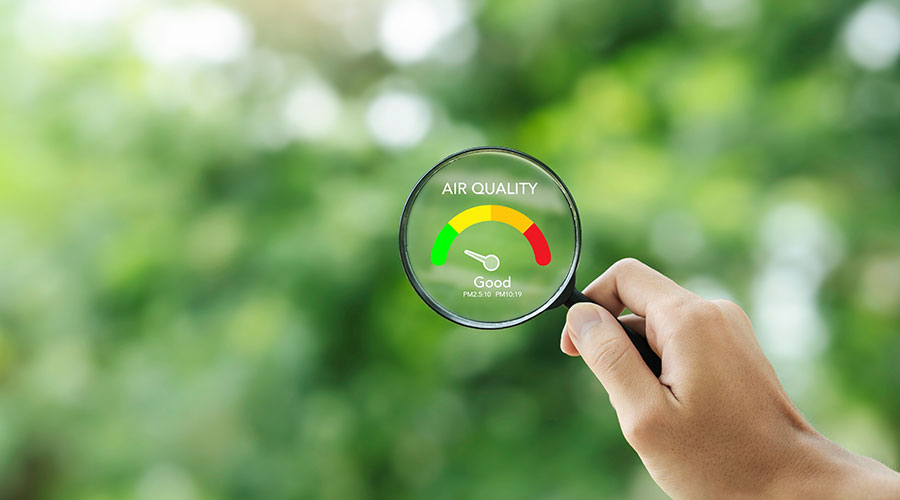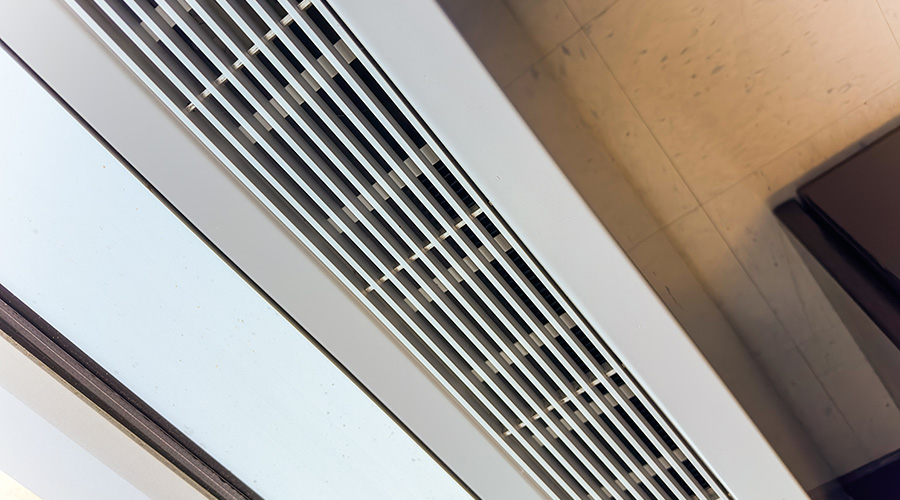Best Practices for Good IAQ
No one has to tell a facility manager that the consequences of poor indoor air quality (IAQ) can go from bad — complaints about headaches and allergies — to worse, with increased absences and even sick building syndrome. Creating a healthy space for building occupants is one pillar of the sustainability movement. There's good reason for that: When occupants are healthy, they're also usually happy and productive, which translates directly to an organization's bottom line.
Recently, the definition of what creates a healthy space for human beings has been expanding. IAQ has evolved beyond looking only at air quality, in part because many good IAQ steps have become standard practice. "The issues related to preventing bad air are much easier to accomplish," says Rico Cedro, president of Verdi Workshop. "We're at a point where we can achieve good IAQ just by doing best practices and complying with ASHRAE standards."
Indoor environmental quality (IEQ) is the next generation of IAQ. It includes looking at issues such as daylighting, thermal comfort and acoustics. Facility managers who understand the role a healthy space plays in supporting productivity and an organization's mission would be wise to examine a building's IEQ.
IAQ Best Practices
Even if a facility manager is interested in IEQ, the importance of good IAQ cannot be understated. IAQ has a direct effect on the health and well-being of a facility's occupants. Lawrence Berkeley National Laboratories (LBNL) has performed myriad studies on the effects of IAQ and found that worker productivity goes down, student test scores suffer and health problems occur when in a facility with poor IAQ. For example, a pair of studies showed that office worker performance, measured by typing, addition and proofreading tests, improved by about 4 percent when an indoor pollutant source was removed.
"High levels of certain chemicals in the air can also lead to respiratory problems, nosebleeds, allergic reactions, headaches and dizziness," says Henning Bloech, executive director of the Greenguard Environmental Institute.
To maintain good IAQ, there are some guidelines a facility manager can follow. First, it's important to keep up on HVAC maintenance. HVAC systems play an important role in ensuring good IAQ, but can fail to do so if not properly maintained. Be sure to change filters, clean coils and replace any worn parts on a timely basis. Always inspect for equipment damage, failure or malfunction to keep everything working smoothly.
Second, avoid bringing in materials and products that off-gas VOCs or other potentially problematic chemicals or odors. "That new product smell? Ultimately what you're smelling is off-gassing from the product," says Bloech. Look for interior products and materials that carry an independent, third-party green certification for IAQ. Some of the largest certifications include Greenguard and Green Seal for many types of products, FloorScore for resilient and hard surface flooring, and Green Label and Green Label Plus for carpeting. Without a third-party certification, be cautious of green claims made by manufacturers that are not backed by facts.
If it's necessary to bring a non-green or strong-smelling product into a facility while occupied, such as an adhesive or solvent, facility managers should be sure to seal off the area where the work is being performed, including sealing HVAC vents, says Bloech. But in most cases, there are low-emitting alternatives available, he says. "Compared to 10 years ago, low-emitting paints and adhesives perform much better now and many manufacturers have them."
Finally, implement a green cleaning program. Bringing in unhealthy cleaning chemicals on a regular basis can contaminate otherwise healthy spaces and defeat the purpose of carefully choosing green interior products. VOCs in cleaning products have been shown to be significant respiratory irritants in studies by LBNL and EPA, among others. In one study, a high frequency of use of standard cleaning chemicals was associated with a 40 percent increase in wheezing, a 50 percent increase in asthma symptoms or medication use, and a 100 percent increase in physician-diagnosed asthma. Even worker's compensation authorities noticed a pattern of high rates of adult-onset asthma in health care workers because those facilities are cleaned while occupied, says Guenther.
Like other interior products, cleaning products and even cleaning programs can be certified by third-party sustainability labels. Different labels tend to focus on different aspects of sustainability. For example, some labels focus on the chemical composition and how it will affect the water supply once it is discarded. Not all labels require IAQ performance testing, so be sure that contractors use products certified by labels such as Greenguard.
Related Topics:












